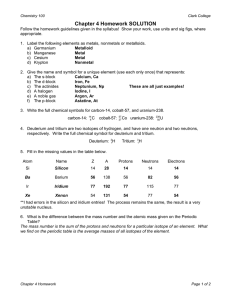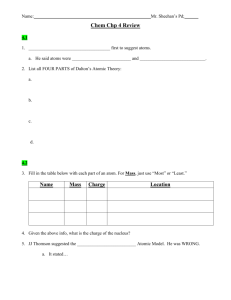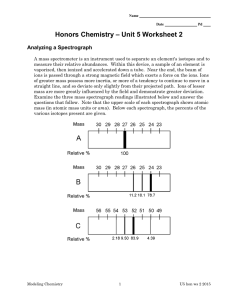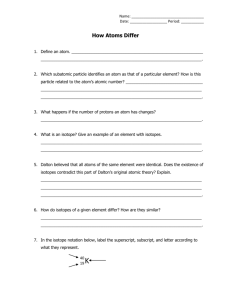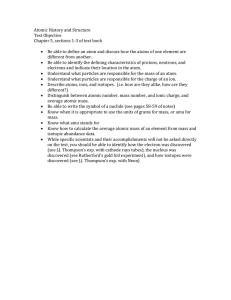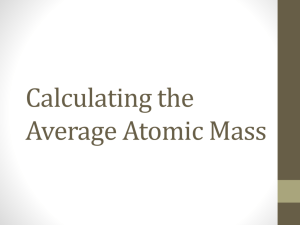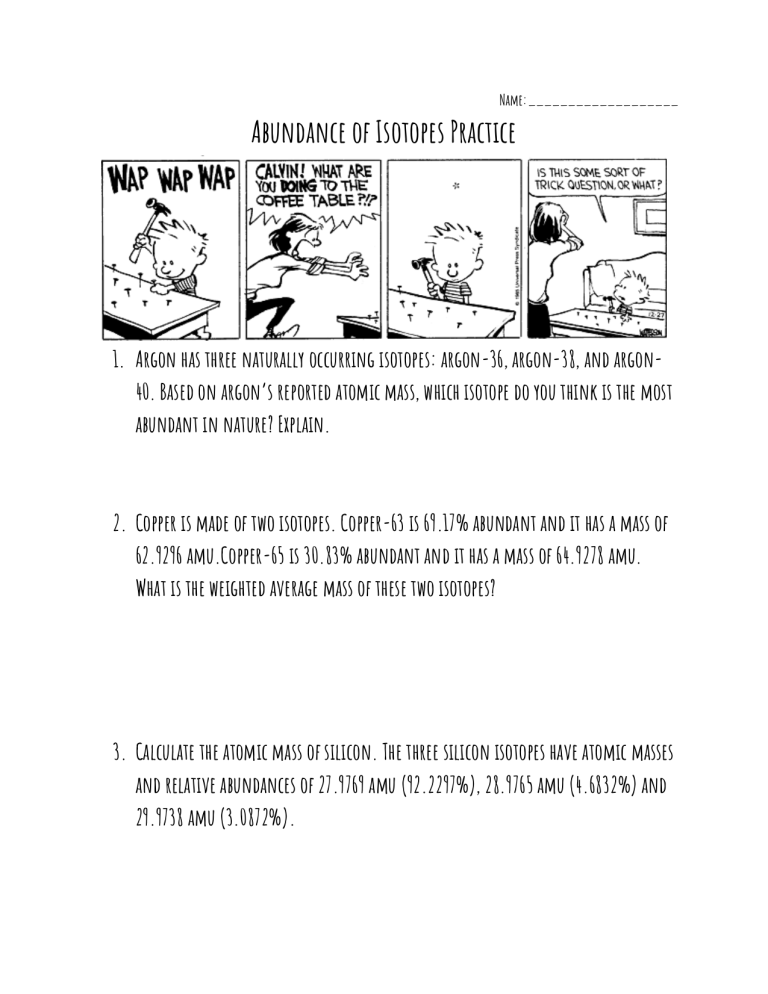
Name:___________________ Abundance of Isotopes Practice 1. Argon has three naturally occurring isotopes: argon-36, argon-38, and argon40. Based on argon’s reported atomic mass, which isotope do you think is the most abundant in nature? Explain. 2. Copper is made of two isotopes. Copper-63 is 69.17% abundant and it has a mass of 62.9296 amu.Copper-65 is 30.83% abundant and it has a mass of 64.9278 amu. What is the weighted average mass of these two isotopes? 3. Calculate the atomic mass of silicon. The three silicon isotopes have atomic masses and relative abundances of 27.9769 amu (92.2297%), 28.9765 amu (4.6832%) and 29.9738 amu (3.0872%). 4. Calculate the atomic mass of lead. The four lead isotopes have atomic masses and relative abundances of 203.973 amu (1.4%), 205.974 amu (24.1%), 206.976 amu (22.1%) and 207.977 amu (52.4%). 5. Bromine has two naturally occurring isotopes. Bromine-79 has a mass of 78.918 amu and is 50.69% abundant. Using the atomic mass reported on the periodic table, determine the mass of bromine-81, the other isotope of bromine. 6. Antimony has two naturally occurring isotopes. The mass of antimony-121 is 120.904 amu and the mass of antimony-123 is 122.904 amu. Using the average mass from the periodic table, find the abundance of each isotope. (Remember that the sum of the two abundances must be 100).
